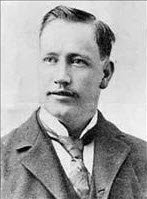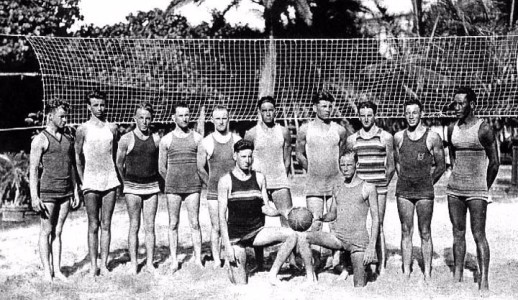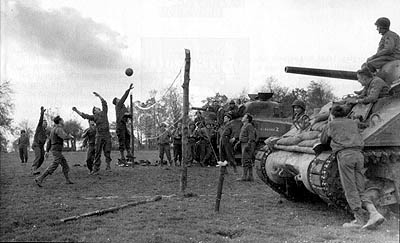When Was Beach Volleyball Invented? When? Where? How? By Whom?
Beach volleyball invented in 1920.
The first volleyball on the beach most likely played in 1915.
Read more below.
Beach Volleyball Invented - Beginnings ofBeach Volleyball
With roots that date back into the 1800s, beach volleyball history has taken some interesting twists and turns on its way to Olympic recognition.Through the years, the game, its organizational level and its players have enjoyed many triumphs.
Some of the major points on the timeline of beach volleyball history include:

- 1895 - William G. Morgan, the physical director of the Holyoke YMCA, creates a game called mintonette. This derivative of baseball, basketball, tennis and badminton later chances its name to volleyball.
- 1900 - William Morgan's game of volleyball spreads to Canada, which is known as the first country outside the U.S. to enjoy this sport.
- The birth of beach volleyball most likely took place in 1915 in Hawaii, on the Waikiki Beaches
- 1918 - By this year, volleyball had spread to such countries as Cuba, Japan, France, China and most of Europe. During World War I, U.S. troops helped spread this sport. Beach versions of the game likely began to appear during this time.
Beach Volleyball Invented - Expansion in 1920's
 Beach Volleyball in Hawaii 1920's
Beach Volleyball in Hawaii 1920's
- 1920 - This was a major year in the history of volleyball
and beach volleyball, as well. 1920 saw the very first doubles
championships held in Philadelphia at the Germantown YMCA. It was also
during 1920, that Santa Monica, California, is credited with
establishing the first beach volleyball courts. This, in essence, was
the true kickoff for this sport.
- The very first beach volleyball games had been taken place in Hawaii, on the Waikiki Beaches in Honolulu - at the Outrigger Canoe Club. From there the sport spread to Southern California and become popular past time. 1924 the first beach volleyball tournaments were played in California. The game was more recreational in 1920's and often played with 6-men teams. On public beaches families and friends showed up to play with 3-men or 4-men teams - depending how many people were present.
- 1920-1930 - Beach volleyball continues to spread around the world between the 1920s and 30s. By 1930, the game appeared in such international locations as Bulgaria, Latvia, the Czech Republic and France. The two-man version of the sport began to popularize as players in Santa Monica started playing the game in this fashion.
 Outdoor
Volleyball on the Sand Was
Popular
Outdoor
Volleyball on the Sand Was
Popular
in the Early Years of Volleyball Already.
- It is written Paul "Pablo" Johnson was the one of the pioneers in two-man Beach Volleyball. In the summer of 1930 in Santa Monica he was waiting people to show up to play six-man game in the beach - until decided to try to play with four people who were present.
- 1944 Santa Monica Recreation Department hosted four tournaments for two-men teams in Beach Volleyball. In the next couple of years similar tournaments were played in Santa Monica and Long Beach.
- 1947 - It was in this year that first tournament took place on State Beach in California. The two-man event had no prize money on the line.
- 1948 - The first tournament with a prize (a case of soda) was held on State Beach.
Beach Volleyball Invented - Beach Volleyball Expansion
1950's Beach Volleyball Spreading to Northern California, Florida, Brazil
 US Soldiers playing volleyball in World War II 1944.
US Soldiers playing volleyball in World War II 1944.
US soldiers spread volleyball all over the world during
World War I and II.
Women start getting more involved in Beach Volleyball. Mixed doubles games are played first, then later women's extend their participation to two-women teams.
Also, the first newspaper-sponsored event took place in Brazil during this decade.
Like this page:




